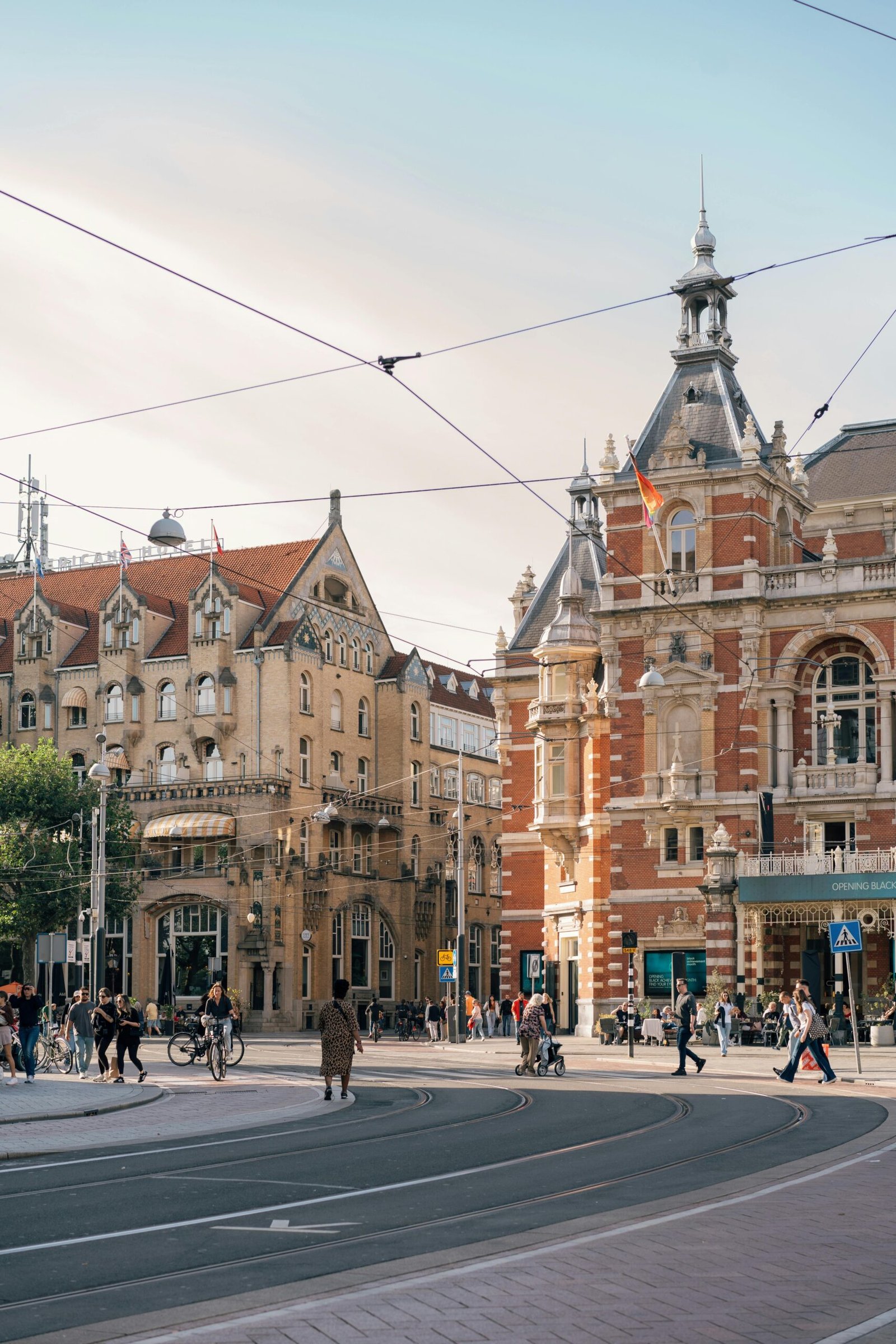
Imagine a world where you can effortlessly cultivate your very own mushrooms right in the heart of your bustling urban environment. From balconies to tiny gardens, the potential for urban mushroom cultivation in limited spaces holds promising opportunities. In this article, we will embark on an exciting journey, exploring the possibilities and benefits of growing mushrooms in urban settings. Get ready to tap into your green thumb and discover the hidden treasures that lie within this captivating form of cultivation.

Benefits of Urban Mushroom Cultivation
Reduction of food miles
Urban mushroom cultivation offers the significant advantage of reducing food miles. By growing mushrooms in urban areas, the distance between the point of production and consumption is greatly reduced. This means that mushrooms can be harvested and delivered to local markets or restaurants in a shorter amount of time, ensuring maximum freshness and flavor. Additionally, this reduction in transportation distance contributes to a decrease in carbon emissions and environmental impact.
Utilization of waste materials
Another benefit of urban mushroom cultivation is the utilization of waste materials. Mushrooms can be grown using various substrates such as sawdust, straw, and even coffee grounds. By using these waste materials as growing mediums, urban cultivators can divert organic waste from landfills and turn it into a valuable resource. This not only reduces waste management issues but also promotes a more circular economy where waste is repurposed and used to generate nutritious and delicious food.
Sustainable and eco-friendly
Urban mushroom cultivation is a sustainable and eco-friendly practice. Unlike traditional agricultural practices that require large areas of land and consume vast amounts of water, mushroom cultivation can be done vertically in compact spaces. This vertical farming method allows for higher yields per square foot and reduces the overall environmental footprint of food production. Additionally, mushrooms require less water compared to many conventional crops, making them an ideal choice for urban areas where water resources may be limited.
Economical and cost-effective
Urban mushroom cultivation is economical and cost-effective, making it an attractive option for individuals or communities with limited financial resources. The startup costs for setting up a small-scale mushroom farm are relatively low compared to other agricultural ventures. Furthermore, mushrooms have a relatively short growing cycle, typically ranging from a few weeks to a few months depending on the variety. This fast turnaround time allows urban cultivators to generate regular income and maintain a sustainable business model.
Types of Mushrooms Suitable for Urban Cultivation
Oyster mushrooms
Oyster mushrooms are one of the most popular types of mushrooms suitable for urban cultivation. They have a mild and delicate flavor, making them versatile in various culinary dishes. Oyster mushrooms are also known for their high nutritional value and are a good source of protein, vitamins, and minerals.
Shiitake mushrooms
Shiitake mushrooms are another excellent choice for urban cultivation. They have a rich and savory flavor, often described as “umami.” Besides being delicious, shiitake mushrooms are also known for their medicinal properties and are believed to boost the immune system and promote overall health.
Lion’s mane mushrooms
Lion’s mane mushrooms, sometimes referred to as “pom-pom mushrooms,” are unique in appearance and taste. They have a slightly sweet and seafood-like flavor, making them a favorite among vegetarians and vegans. Lion’s mane mushrooms are also believed to have cognitive benefits and may help improve memory and focus.
Button mushrooms
Button mushrooms, also known as white mushrooms, are a classic choice for urban cultivation. They have a mild and slightly earthy flavor, making them a versatile ingredient in many dishes. Button mushrooms are also readily available and widely consumed, making them a popular choice for commercial cultivation.

Space Requirements for Urban Mushroom Cultivation
Indoor cultivation options
Indoor cultivation is a viable option for urban mushroom cultivation, especially in areas with limited outdoor space. It allows cultivators to have greater control over environmental factors such as temperature, humidity, and lighting. Indoor setups can range from simple grow bags placed in a spare room to more advanced setups using grow tents and shelves with artificial lighting.
Vertical farming methods
Vertical farming is an innovative approach to urban mushroom cultivation. This method maximizes space utilization by growing mushrooms in vertically stacked layers or columns. Vertical farming systems can be designed to fit in small spaces, such as unused walls or corners. This technique allows for increased productivity and can be implemented in both indoor and outdoor settings.
Utilizing unused spaces
Urban mushroom cultivation can make use of otherwise unused or underutilized spaces. Empty basements, storage rooms, or disused warehouses can provide suitable environments for growing mushrooms. By repurposing these spaces, cultivators can transform them into productive areas that contribute to the local food supply and bring life back into forgotten areas of the city.
Utilizing balcony or rooftop spaces
For urban dwellers with limited indoor space, utilizing balcony or rooftop spaces can be a viable option for mushroom cultivation. These areas receive ample sunlight and can be converted into mini mushroom farms using containers or raised beds. Cultivating mushrooms in these elevated spaces not only saves valuable indoor space but also adds greenery and enhances the aesthetic appeal of the urban landscape.
Choosing the Right Growing Medium
Coconut coir
Coconut coir, the fibrous material collected from the husk of coconuts, is an excellent growing medium for mushrooms. It has a naturally high water retention capacity and provides a stable pH level, creating an ideal environment for mushroom growth. Coconut coir is also a sustainable choice as it is a byproduct of the coconut industry.
Sawdust
Sawdust is a common and readily available substrate for growing mushrooms. It can be sourced from various wood-processing industries, such as furniture making or construction. Sawdust provides a stable and nutrient-rich medium for mushroom growth, particularly for species like oyster mushrooms and shiitake mushrooms.
Straw
Straw is another popular substrate for mushroom cultivation. It can be easily obtained from local farmers or agricultural suppliers. Straw is highly affordable and suitable for a wide range of mushroom varieties. It provides ample nutrients and acts as a support structure for the growing mycelium.
Coffee grounds
Coffee grounds offer an alternative growing medium for urban mushroom cultivation. Many coffee shops and households generate a significant amount of used coffee grounds as waste. Instead of disposing of this valuable resource, it can be repurposed for mushroom cultivation. Coffee grounds provide a nutrient-rich substrate and contribute to the sustainability of the cultivation process.

Supplies and Equipment Needed
Spawn or mycelium
Spawn, or mycelium, is the vegetative part of the mushroom and is used as the inoculant to kickstart the cultivation process. It is typically purchased in the form of grain spawn, sawdust spawn, or plug spawn. The choice of spawn depends on the selected mushroom variety and the cultivation method.
Growing containers
Growing containers are essential for urban mushroom cultivation. They can range from simple trays or buckets to specialized bags or containers designed for mushroom cultivation. The choice of container depends on the available space and the cultivation method being employed.
Air filtration system
An air filtration system is crucial for maintaining a clean and sterile environment for mushroom cultivation. It helps prevent contamination by filtering out airborne spores and bacteria. HEPA filters are commonly used in mushroom cultivation setups to ensure clean and fresh air circulation.
Humidity and temperature control equipment
Maintaining optimal humidity and temperature levels is vital for successful mushroom cultivation. Depending on the selected mushroom varieties, specialized equipment such as humidifiers, dehumidifiers, and temperature controllers may be required to create and maintain the ideal growth conditions.
Care and Maintenance Techniques
Maintaining proper humidity
Proper humidity levels are crucial for mushroom cultivation as it affects the overall growth and development of the mushrooms. Most mushroom varieties thrive in high humidity environments, typically ranging from 80% to 95%. This can be achieved through misting, humidifiers, or by placing trays of water near the growing area to increase moisture levels.
Providing adequate ventilation
Adequate ventilation is essential to prevent the buildup of carbon dioxide and maintain proper air circulation. It helps remove excess humidity and carbon dioxide while replenishing the air with fresh oxygen. Proper ventilation prevents the growth of mold and provides a healthy environment for mushroom cultivation.
Controlling temperature levels
Different mushroom varieties have specific temperature requirements for optimal growth. It is crucial to maintain the appropriate temperature range throughout the cultivation process. This may involve heating or cooling equipment, insulation, or the use of temperature control units to adjust and regulate the growing environment.
Regular monitoring and pest management
Regular monitoring is essential to ensure that the growing environment remains clean and free of pests and diseases. Mushroom beds should be inspected for signs of contamination or infestation, and any issues should be addressed promptly. Integrated pest management techniques can be employed to prevent or control pests without the use of harmful chemicals.

Harvesting and Storage
Timing of harvest
The timing of harvest is crucial to ensure mushrooms are picked at their peak freshness and flavor. Different mushroom varieties have specific optimal harvest times. Generally, mushrooms should be harvested just before the veil underneath the cap breaks, indicating that the spores are about to be released. Harvesting too early or too late can affect the quality and texture of the mushrooms.
Proper harvesting techniques
Proper harvesting techniques are necessary to minimize damage to the mushrooms and ensure optimal yield. It is important to gently twist or cut the mushrooms at the base, avoiding any unnecessary handling or impacting neighboring mushroom growth. Care should be taken not to disturb the mycelium or disturb the growing bed.
Storage methods to prolong shelf life
To prolong the shelf life of harvested mushrooms, proper storage methods are essential. Mushrooms should be stored in a cool and dark place, preferably between 32°F to 40°F (0°C to 4°C). They can be placed in breathable containers, such as paper bags or mesh bags, to allow air circulation and prevent moisture buildup.
Drying or preserving excess mushrooms
If there is an excess of harvested mushrooms, drying or preserving them can be a great way to extend their usability. Drying can be done using a dehydrator or by air-drying in a well-ventilated area. Preserving methods, such as pickling or canning, can also be utilized to store mushrooms for longer periods.
Revitalizing Unused or Abandoned Spaces
Transforming empty warehouses
Empty warehouses offer great potential for urban mushroom cultivation. These spacious buildings can be repurposed to house large-scale mushroom farms. With proper insulation, ventilation, and lighting, empty warehouses can provide an ideal environment for growing a variety of mushrooms.
Repurposing abandoned buildings
Abandoned buildings can be transformed into vibrant urban mushroom farms. These spaces often have existing infrastructure, such as utilities and plumbing, which can be utilized for mushroom cultivation. Renovation and retrofitting can create a suitable environment for growing mushrooms while giving new life to neglected areas of the city.
Using basements or underground areas
Basements and underground areas provide a unique opportunity for urban mushroom cultivation. These subterranean spaces offer a stable temperature and humidity, making them ideal for mushroom growth. With proper ventilation and lighting, basements can become productive mushroom farms that utilize the available space efficiently.
Creating community gardens
Urban mushroom cultivation can be incorporated into community garden initiatives, creating a shared space for cultivation and education. By allocating specific areas for mushroom cultivation within community gardens, individuals and groups can come together to learn, share resources, and foster a sense of community while enjoying the benefits of locally grown mushrooms.

Promoting Urban Mushroom Cultivation
Educational initiatives
Educational initiatives play a vital role in promoting urban mushroom cultivation. Workshops, seminars, and training programs can be organized to educate individuals and communities about the benefits and techniques of mushroom cultivation. These initiatives can empower people with the knowledge and skills needed to start their own urban mushroom farms.
Local government support
Local government support can greatly encourage and facilitate urban mushroom cultivation. By providing incentives, grants, or favorable policies, governments can promote the establishment of mushroom farms in urban areas. Moreover, incorporating mushroom cultivation into urban planning strategies can help create a more sustainable and resilient food system.
Collaborating with restaurants and cafes
Collaborating with restaurants and cafes is an effective way to promote and market urban-grown mushrooms. Establishing partnerships with local eateries can ensure a steady demand for fresh mushrooms while also raising awareness about the benefits of urban agriculture. Restaurants and cafes can showcase dishes made with locally grown mushrooms, highlighting their freshness and taste.
Organizing workshops and demonstrations
Organizing workshops and demonstrations can engage the community and generate interest in urban mushroom cultivation. These events can include hands-on activities, such as growing and harvesting mushrooms, as well as informative sessions on the benefits and techniques of urban mushroom cultivation. By bringing people together, these events can inspire and empower individuals to take up mushroom cultivation as part of their urban lifestyle.
Success Stories of Urban Mushroom Cultivators
Case study: Small-scale urban mushroom farm in New York City
A small-scale urban mushroom farm in New York City has successfully utilized limited indoor space to grow oyster mushrooms. By converting a small basement into a controlled growing environment, the farm produces high-quality mushrooms for local farmers markets and restaurants. The farm’s innovative approach to utilizing unused space has not only created a sustainable business model but has also inspired other urban dwellers to start their own mushroom farms.
Case study: Community-led mushroom cultivation project in Berlin
A community-led mushroom cultivation project in Berlin has transformed an abandoned building into a thriving urban mushroom farm. With the support of local government initiatives, the project engages residents in the cultivation process, offering training and workshops to promote self-sufficiency and sustainable food production. The project has not only reimagined a neglected space but also fostered a sense of community pride and resilience.
Case study: Entrepreneurial success in urban mushroom cultivation
An entrepreneurial success story in urban mushroom cultivation lies in the journey of a passionate cultivator who turned a small balcony into a flourishing mushroom farm. Through research and experimentation, the entrepreneur successfully adapted vertical farming techniques to a limited space, producing shiitake and lion’s mane mushrooms. By leveraging local markets and online platforms, the entrepreneur has built a thriving business, supplying gourmet mushrooms to chefs and health-conscious consumers.
In conclusion, urban mushroom cultivation offers numerous benefits and opportunities for individuals and communities in limited spaces. From reducing food miles and utilizing waste materials to promoting sustainability and providing economic benefits, the potential of urban mushroom cultivation is vast. With the right techniques, equipment, and support, anyone can embark on a journey of cultivating their own delicious and nutritious mushrooms, revitalizing urban spaces, and contributing to a greener and more sustainable future.





